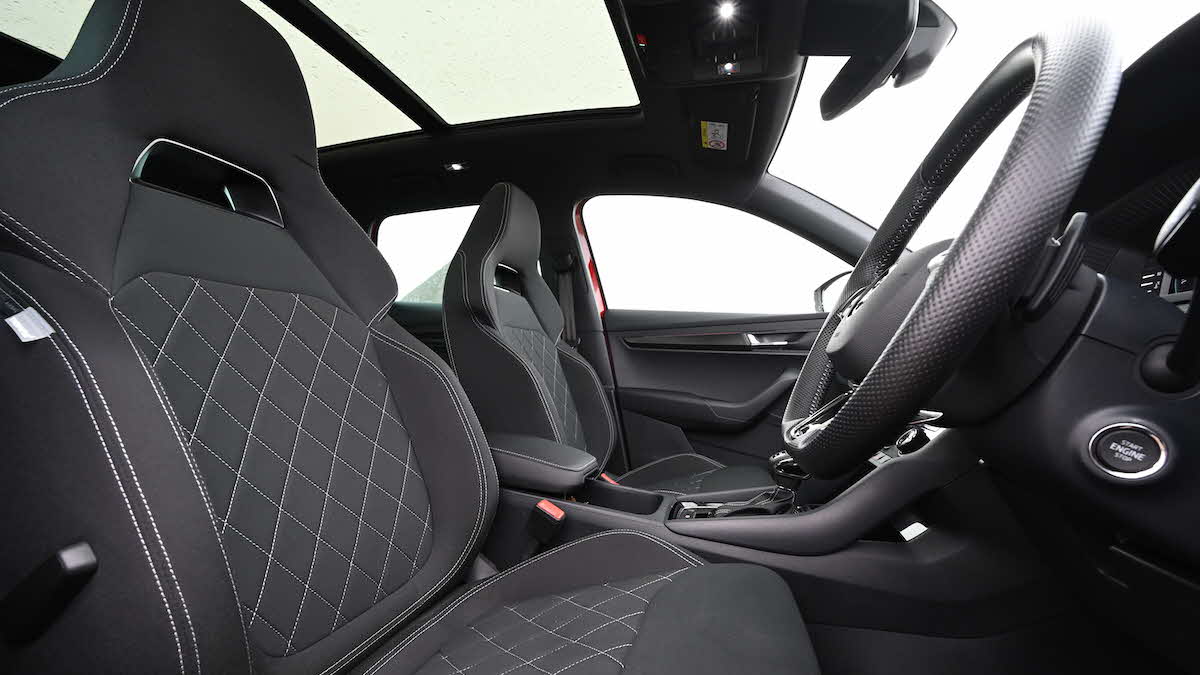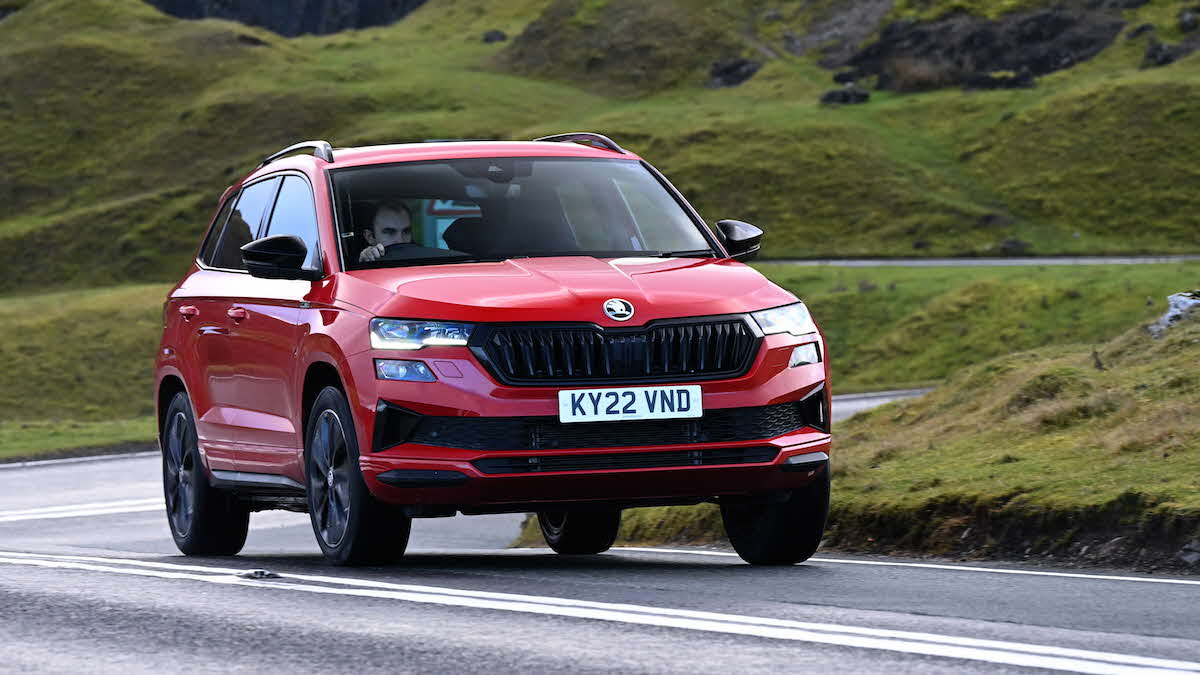New and used
Browse for bargains from thousands of new and used vehicles for sale, or sell your caravan, motorhome, towcar or accessories.
Buy and sell nowJames Batchelor puts our Towcar of the Year 2023 through its paces
Flick through the list of previous Towcar of the Year champions and there’s one brand that wins again and again: Škoda. Although its Superb and Kodiaq have taken home the overall title in previous years, the mid-sized Karoq SUV had yet to grace the winner’s podium.
That all changed last year. The judging panel voted unanimously for it, believing the Karoq ticked all the boxes for caravanners. Fresh from a recent update, and powered by the ubiquitous Volkswagen Group 2.0-litre TDI diesel engine and four-wheel drive system, judges felt it offered the best package for those looking for a new towcar.

Škoda received some criticism when it replaced the quirky and characterful Yeti with the rather unremarkable-looking Karoq in 2018. Still, the Karoq has become one of the leaders in the mid-sized SUV pack, and has proved to be a very practical choice for families and towers alike.
Four years after its launch, Škoda decided to give its high-selling Karoq a facelift. A new set of front and rear bumpers modernise the exterior and, more noticeably, there’s a new, pouty grille, and slimmer LED headlights and tail lights. My test car is the range-topping SportLine model which, as the name suggests, has a sporty look with gloss black trim instead of chrome, completed with the optional £390 metallic red paintwork. It also came with a set of aerodynamic 18in black alloys, although Škoda has changed these to a more handsome set of 19-inchers with a different design for 2023.
The interior has seen fewer changes, which is a good or a bad thing depending on your point of view. Compared to the Peugeot 3008 and Kia Sportage, the Karoq’s simpler dashboard might come across as a little dated, but it is a logical and unfussy set-up, with big knobs and buttons – and, importantly, the quality screams at you.
The doors thunk with a pleasing sense of solidity, and there’s squidgy, soft-touch plastic virtually everywhere. There are practical touches too, like a large storage bin in the centre console, elasticated netting in the door bins to securely store items, and a small umbrella under the passenger seat; the test car even had a small removable bin bag in the driver’s door pocket.
The tech updates are more evident, with all trim levels getting an eight-inch digital instrument display rather than the old model’s pair of clocks, and there are a number of new option packs. The Travel Assist Package Plus, at £1,495, for instance, adds features such as lane and traffic jam assist, adaptive cruise control and even a USB-C port in the rear-view mirror – perfect if you want to power a dashcam. The test car also had an upgraded infotainment system with wireless phone-charging, and a ‘Rough road package’, which adds protective panels to the underside of the car. Even the standard infotainment system is simple to use, and it’s easy to get comfortable in the Karoq.
I’d question whether the SportLine’s high-backed bucket seats are needed in a family SUV, but they’re nevertheless supportive on long journeys.
Aside from the tech updates, it’s standard Karoq inside, so there’s plenty of leg and head room in the back. Škoda has carried over its clever VarioFlex rear seats, the £745 VarioFlex package (not available with the SportLine trim) replacing the standard rear bench with three individual seats which can be folded or even removed separately, adding a greater degree of flexibility. Boot space is very good, and although 4x4 models have slightly less room and there’s no height-adjustable floor at any trim level, it’s a practical area with cubbies, hooks and rails. And of course there’s Škoda’s trademark ice-scraper in the filler cap.

Unusually, Škoda didn’t take the opportunity with this update to introduce some electrified powertrains in the form of mild-, full- or even plug-in hybrids. That means the Karoq soldiers on with 108bhp 1.0-litre three-cylinder, 148bhp 1.5-litre and 187bhp 2.0-litre four-cylinder petrols. And, while other carmakers are turning their backs on diesel power, the Karoq still comes with a pair of 2.0-litre diesels – 114bhp, or the 148bhp tested here. Only the 2.0-litre petrol and 148bhp 2.0-litre diesel come with four-wheel drive as standard, while it can be optioned on the lower-powered 114bhp 2.0-litre diesel. Due to its sportier positioning, the SportLine is the only trim level that gets the 2.0-litre petrol and high-powered diesel.
On first impressions the Karoq drives pretty unremarkably, but spend more time with it and you realise that it’s a highly competent car. It steers, handles and goes with polish, and the suspension is more supple than the comparable Volkswagen Tiguan and SEAT Ateca. It’s very sure-footed and the four-wheel drive system gives a dose of extra traction in slippery conditions. The 2.0-litre diesel, meanwhile, is extremely smooth and is perfectly matched to the seven-speed DSG automatic gearbox; it’s frugal too – I easily managed 48mpg on long runs unhitched.
Whether around town, on country roads or on motorways, the Karoq is a very comfortable and refined companion, and makes for an excellent daily driver.

A good towcar needs to excel when unhitched and hitched, and this is exactly why the Karoq came out on top in 2023’s Towcar of the Year competition. During the judging, fully ballasted and hitched to a ballasted caravan, the Karoq acquitted itself impressively, attacking an assortment of roads and surfaces with confidence – one judge even remarked it ‘bossed’ the caravan.
In this test a few months after the Karoq’s moment of glory in the competition, the car again impressed on public roads. In every situation the 2.0-litre diesel feels punchy, the gearbox smooth and the car agile; it even returned 27mpg when towing.
In some SUVs, opting for upgraded dampers can improve ride and handling when towing. Škoda does offer the Karoq with Dynamic Chassis Control, which can stiffen and slacken the dampers even further, but it’s not a necessary addition as the car is smooth and flat when hitched. Small but important features like mirrors that are easy to attach extended mirrors to, and an icon on the digital instrument display that shows when the electrics are properly hooked up are just bonuses.
The Škoda Karoq is certainly one of the best towcars currently on sale. It’s a superb all-rounder whether hitched or driving solo – it was clearly an easy decision to name it Towcar of the Year 2023.